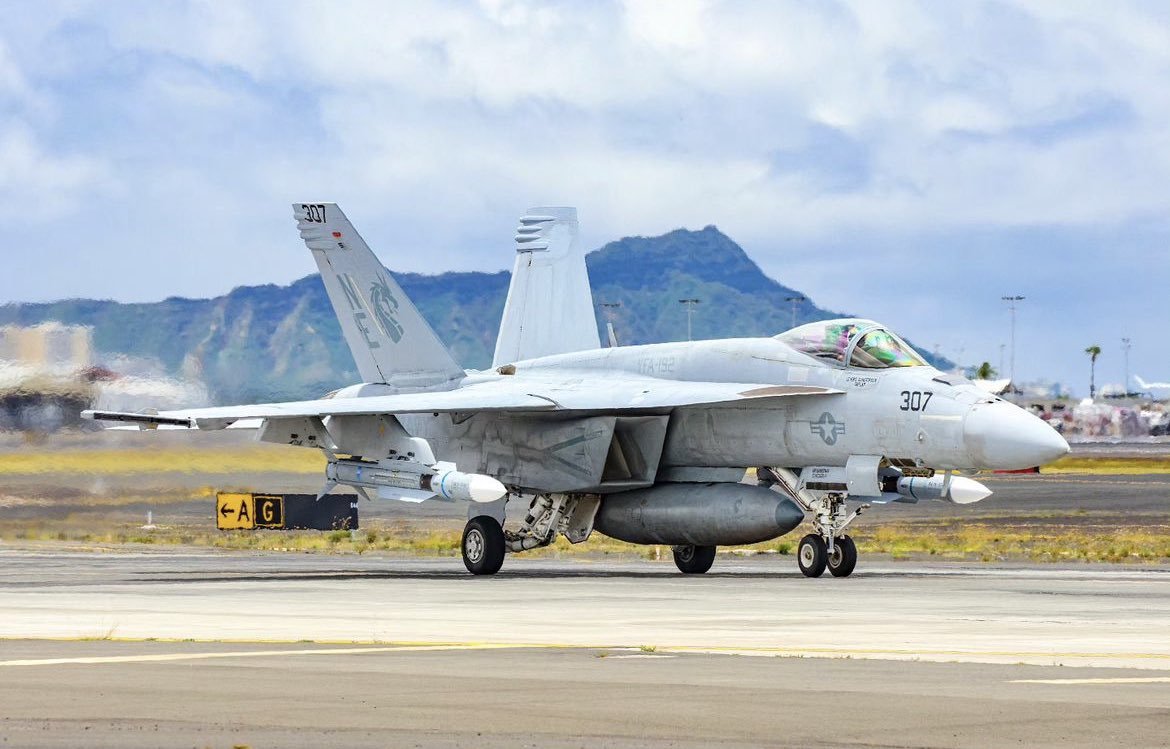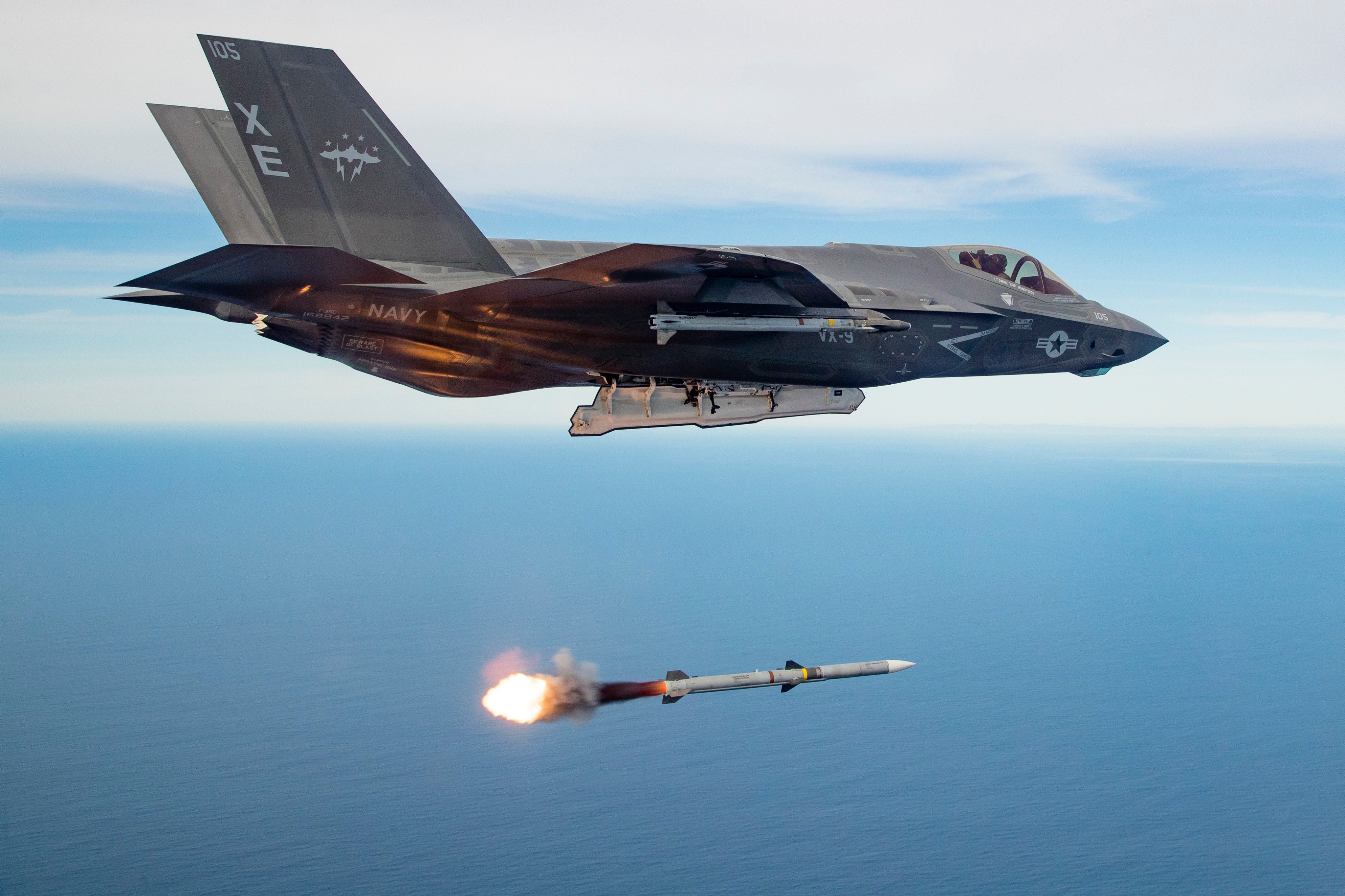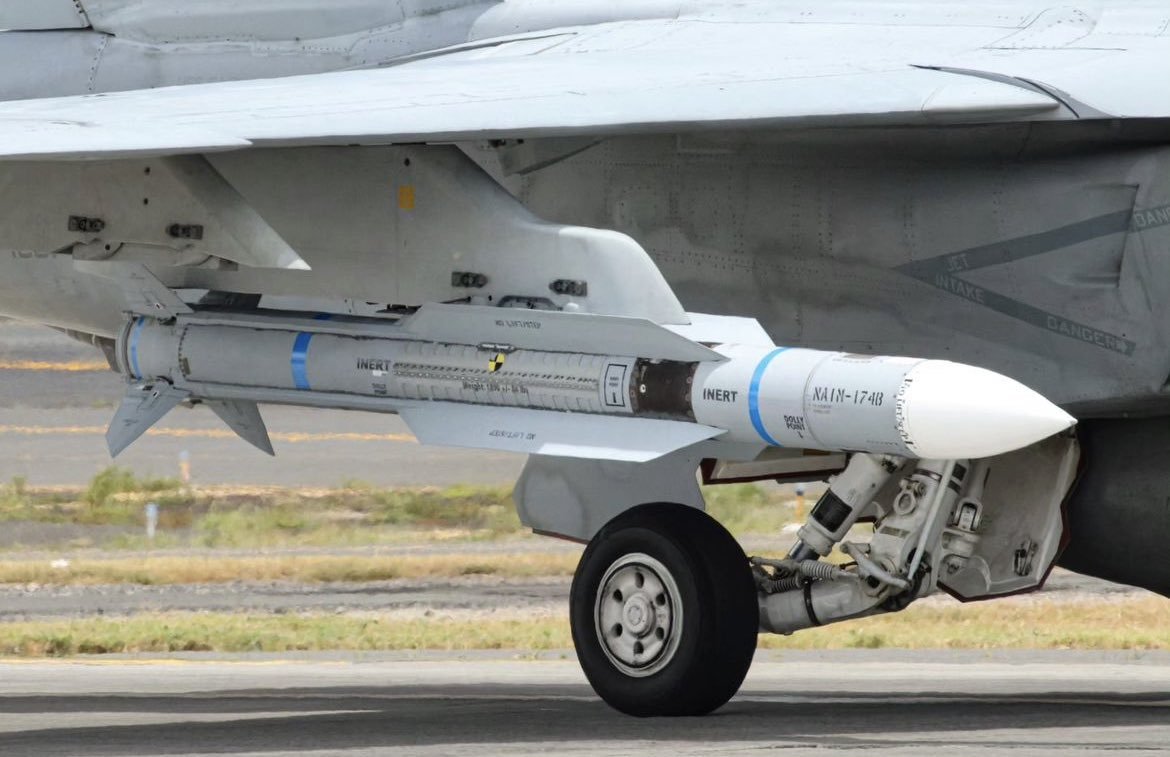In light of heightened volatility in the Indo-Pacific, the US has developed a new air-to-air missile that would provide the US military and its allies a competitive advantage over China.
In modern combat, the ability to carry out long-range stand-off attacks becomes strategically crucial, especially when the adversary is China, which boasts of a sophisticated Anti Access/Area Denial (A2/AD) network along its coastline—making its airspace almost impenetrable.
With an increasing number of states in the Indo-Pacific region acquiring long-range strike capabilities, it appears that the region is at the cusp of a new missile warfare. For instance, key US allies in the Indo-Pacific, including Japan and Australia, have acquired the long-range Tomahawk and SM-6 missiles from the US. South Korea has also got approval for the purchase of SM-6.
In addition to these two surface and sea-launched missiles that have already rattled China, the United States has recently introduced a long-range air-to-air missile, the AIM-174B, which is rapidly gaining attention in the Indo-Pacific region.
F-16s “Sitting Ducks” For Russian MiG-31 Fighters? Putin Warns Of Consequences Over Fighting Falcons
The AIM-174B, which was officially acknowledged in July 2024, is the longest-range missile ever deployed by the United States. Analysts contend that the United States Navy’s introduction of advanced, long-range air-to-air missiles in the Indo-Pacific could potentially neutralize China’s aerial dominance. This development is part of an increasing focus on power projection in response to heightened regional tensions, as recently detailed in a comprehensive Reuters report.

On July 2, 2024, two AIM-174B missiles — the air-launched version of the SM-6 missile — carried by an F/A-18E Super Hornet from the VFA-192 “Golden Dragons” on the USS Carl Vinson aircraft carrier were photographed as the aircraft taxied at Joint Base Pearl Harbor-Hickam, Hawaii. The designation AIM-174B on the missiles indicated that they were air-to-air missiles with a very long range.
The US Navy’s combat effectiveness would be enhanced through the incorporation of air-launched variants of these missiles with its Super Hornet aircraft. When launched from a high altitude, these missiles are capable of destroying ships and intercepting incoming ballistic missiles from distances comparable to that of enemy aircraft located hundreds of miles away.
More significantly, the US required a missile that could outrange the Chinese long-range PL-15, and now it possesses one.
How China Blunted US Advantage
Escalating tensions in at least two significant hotspots in the Indo-Pacific—the South China Sea and the Taiwan Strait—have enhanced the possibility of conflict between the United States and China.
Consequently, both sides have been preparing for a potential battle or at least a limited-armed showdown. For the United States, China’s primary aerial threat is its long-range PL-15 air-to-air missile, which has a claimed range of 200 to 300 kilometers. The arrival of PL-15 missiles changed the power balance to the US’s disadvantage.
Earlier, the USAF’s fifth-generation stealth aircraft, the F-22 Raptor, and F-35 Lightning II rendered missiles like the AIM-120 sufficient for many years, considering that the AIM-120 has an effective range of approximately 150 kilometers.
Moreover, the US military focused on upgrading the AMRAAM (the AIM-120 Advanced Medium-Range Air-to-Air Missile), greatly improving its performance over the years, as noted by Justin Bronk, an airpower and technology expert at London’s Royal United Services Institute, in a statement to Reuters.
A stealth aircraft equipped with the AIM-120 had the strategic advantage to deliver the first strike—until a few years ago.

This firmly established American dominance was challenged by the introduction of China’s J-20 Mighty Dragon stealth fighter, as highlighted by Kelly Grieco, a senior fellow at the Stimson Center. To make matters worse, these fighters were equipped with the long-range PL-15 missile.
With the J-20 stealth aircraft equipped with a PL-15 long-range missile, a Chinese fighter pilot might be able to identify non-stealthy U.S. aircraft and shoot them down far beyond their ability to retaliate.
Furthermore, it could compel American stealth aircraft to operate at dangerously close ranges to effectively launch their missiles, which introduces significant risks given the Chinese military’s proficiency with advanced air defense systems.
“If a Chinese fighter can outrange an American fighter, it means they can get the first shot,” Kelly Grieco said. “It’s hard to outrun something that’s traveling at Mach 4.”

EurAsian Times understands that China has manufactured and deployed a minimum of 200 J-20 fighter jets, which are equipped with numerous PL-15 missiles both in stock and integrated into the aircraft.
For its part, the US has been working on developing a highly secretive, extremely long-range missile: the AIM-260 Joint Advanced Tactical Missile (JATM). Though the missile was first announced in 2019, it has yet to enter mass production, and an induction is still far-fetched.
This is where the AIM-174B, an air-launched variant of the popular SM-6, enters the picture and changes the game for the United States, which continues to be at loggerheads with China in the Indo-Pacific.
AIM-174B Outranging The PL-15
In modern combat, the first-strike advantage is often decisive. The AIM-174B was, thus, developed to address that concern. With the AIM-174B, the Super Hornet would have an air-to-air weapon that could counter a wide spectrum of aerial threats hundreds of miles away. It is a major advantage over the AIM-120 AMRAAM, as previously explained in a EurAsian Times report.
The AIM-174B largely outranges the Chinese PL-15 with a stated range of about 400 kilometers. This means that American warplanes may safely hit “high-value” Chinese targets, such as command-and-control planes, and keep threats farther away from aircraft carriers in case of a conflict.
Moreover, military experts almost unanimously highlighted three main advantages: it doesn’t need new production lines, it can fly several times farther than the next-best American choice, the AIM-120 AMRAAM and it can be used with aircraft from at least one ally, Australia.
With the threat of a conflict with China never off the table and China’s rapid production and deployment of its long-range missiles, the induction of the AIM-174B would be a massive boost to US firepower. It would allow the US Navy to hit enemy aircraft and launch repeated strikes aimed at disabling the sophisticated Anti Area/Access Denial (A2/AD) system.

Most importantly, it would assist in thwarting an enemy attack. The AIM-174B launch platform, which would be integrated with the F-35, the Aegis, and E-2D (an American tactical airborne early warning aircraft capable of operating on carriers), would increase the Navy’s engagement range for intercepting flying targets.
This would be done under the Naval Integrated Fire Control-Counter Air (NIFC-CA) architecture. The Navy currently intercepts naval targets using the basic SM-6.
Since the SM-6 was initially intended for a ship-launched air defense role, production lines are already available, according to Raytheon. However, the manufacturer has not divulged any information on how many SM-6s would be converted to the AIM-174B standard, especially since it has the SM-6 on order from foreign customers.
China is already working on creating its air-launched missiles with a range exceeding that of the PL-15. As previously reported by the EurAsian Times, the PL-17 has a range of 400 kilometers, making it one of the farthest-reaching air-to-air missiles in the world. The missile was displayed in conjunction with a J-16 late last year.
However, aviation experts indicate that it may take some time before the PL-17s are extensively integrated into the fighter jets of the Chinese People’s Liberation Army Air Force
For now, the US may have managed to tilt the balance in its favor with the AIM-174B. The US and its seasoned ally, Australia, operate Super Hornets in the region. Since the Super Hornet is a carrier-capable aircraft, the allies’ advantage against China is multiplied.
Nonetheless, much will hinge on the quantity of these missiles that can be manufactured and rapidly deployed, as time is of the essence and China is continuously developing new deadly capabilities.
- Contact the author at sakshi.tiwari9555 (at) gmail.com
- Follow EurAsian Times on Google News




